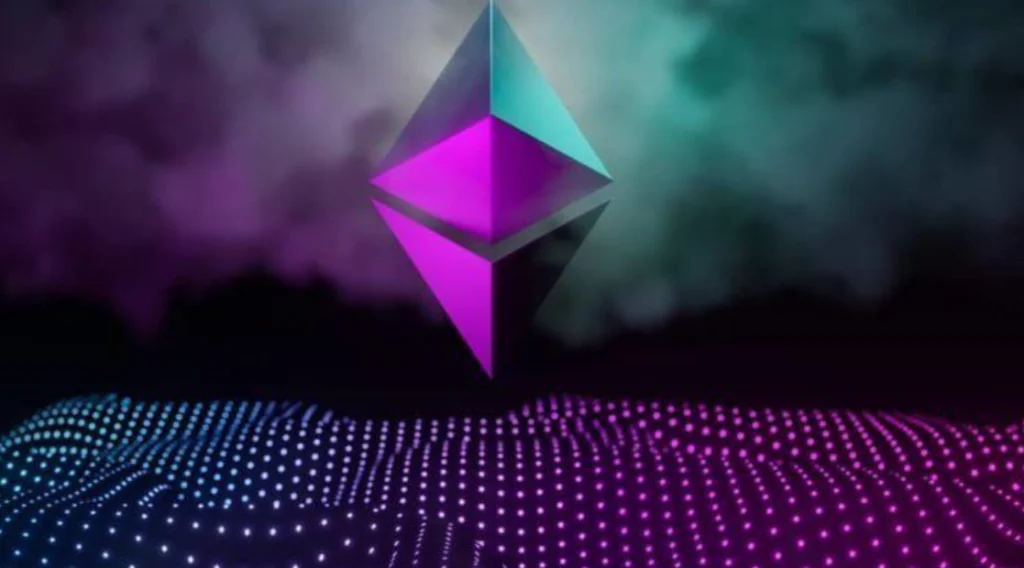And so it happened! The Dencun upgrade on the Ethereum blockchain has been successfully implemented, significantly impacting the performance and valuation of tokens associated with layer-2 scaling solutions such as Arbitrum, Optimism, and Polygon.

Arbitrum, a leading force in Ethereum’s layer-2 scaling ecosystem, witnessed remarkable growth around the time of the Dencun launch. The platform’s ARB token appreciated by 11% on the day leading up to the upgrade and 7.5% over the previous week.
At its peak, ARB reached $2.25, eventually stabilizing at $2.20 on Gate.io. With $16 billion in assets on its platform, Arbitrum commands a 41% share of the market, illustrating its significant role in enhancing Ethereum’s scalability.
Ethereum Layer 2 networks
Layer-2 solutions are designed to augment the Ethereum network, increasing its capacity for handling transactions and improving overall scalability while maintaining the network’s foundational security features. This development allows users to benefit from the security of the Ethereum mainnet without incurring high transaction fees.
The Dencun upgrade, now in effect, has optimized Ethereum’s architecture to process data more efficiently. This enhancement is expected to reduce operational costs for layer-2 solutions and decrease transaction fees for users by up to 75%. More on this later.
Optimism, which accounts for approximately 24% of Ethereum’s layer-2 transaction volume, has also seen positive movement in its OP token, which climbed 3% in a single day and 27% over the past month, despite a slight 3.5% dip from the previous week. The OP token was priced at $4.50 following the upgrade.
The Optimism Foundation recently engaged in a private sale of 19.5 million OP tokens, introducing a two-year vesting period for the purchaser, whose identity remains undisclosed. Despite this lockup, the tokens can be delegated for governance proposal voting.
Polygon, known for its dominance in the Ethereum layer-2 bridge market with a 30% share, observed a 4.7% increase in its MATIC token value the day before the upgrade. The token’s price has surged 18% in the last week, reaching a market cap of $11.5 billion.
Ethereum’s native token, ETH, managed to maintain its price above the $4,000 mark in anticipation of the Dencun upgrade. Following the upgrade, ETH traded at $4,055.30, marking a 1.2% increase on the day and a 6.5% rise from the week prior, signaling strong market confidence since crossing the $4,000 mark.
What is Dencun?
The Dencun initiative, a significant update executed as a hard fork, was activated on the Ethereum network at epoch 269,568, commencing at 13:55 UTC and reaching completion by 14:10 UTC.
This enhancement introduces an innovative method for data storage on the Ethereum blockchain, creating a specialized segment for “blobs” that operates independently from standard transactions, facilitating more economical data handling.
Regarded as the most substantial overhaul Ethereum has undergone in nearly a year, Dencun marks a pivotal juncture in the evolution of the blockchain. This upgrade is set to revolutionize how Ethereum addresses its well-documented issue of high transaction costs. It also signals the onset of a competitive period among leading layer-2 networks, each vying to maximize the scalability improvements offered.
Starknet, a layer-2 network, announced its commencement of blob data submissions in the wake of the upgrade. However, not all transitions were smooth; Blast, another layer-2 entity, reported a temporary halt in block production attributed to complications arising from the Dencun changes. They later confirmed the resolution of these issues, promising a detailed analysis to follow.
The core of this upgrade lies in the adoption of “proto-danksharding,” an approach that redefines transaction categorization on Ethereum by introducing data blobs. This innovation primarily benefits layer-2 networks such as Arbitrum, Optimism, and Polygon, which enhance Ethereum’s scalability by aggregating user transactions and consolidating them into the main blockchain in large batches.
These networks utilize rollup technology, which has gained considerable traction within the Ethereum community, attracting substantial user investment and achieving transaction volumes that often surpass those on the Ethereum mainnet itself.
With the deployment of Dencun, these layer-2 solutions are now equipped to directly submit data to Ethereum in a more streamlined and cost-effective manner, a change expected to lower operational costs and, by extension, reduce transaction fees for end-users.
This upgrade represents Ethereum’s initial steps towards the adoption of “sharding,” a future technological goal aimed at partitioning the blockchain into multiple segments or “mini-shards” to enhance transaction processing efficiency and affordability. While the full realization of sharding is still on the horizon, the introduction of proto-danksharding with Dencun serves as a transitional measure to alleviate the high gas fees associated with Ethereum transactions.
Proto-danksharding
The introduction of proto-danksharding heralds a boon for an emerging segment within the Ethereum space, known as data availability (DA) layers. Innovations like Celestia, EigenDA, and Avail, which belong to this category, are designed to support the vast data demands of rollups.
These DA layers operate as independent blockchains dedicated to verifying the existence and accessibility of transaction data. Given the extensive data output from rollups and their significant consumption of Ethereum’s data capacity, the advent of proto-danksharding is a pivotal development, potentially reducing the financial burden of accessing DA layer data.
With the expectation of substantially lower fees for rollups, speculation is rife about a forthcoming “fee war” as these networks vie for users by undercutting each other’s transaction costs. The true impact of proto-danksharding on this dynamic remains to be seen, pending its full deployment and integration.
The strategy for setting transaction fees will ultimately vary across the ecosystem. Analysts note the unsustainable nature of competitors who offer layer-2 fees at near-zero costs, highlighting the diverse approaches to pricing within the space.
Furthermore, experts within the layer-2 domain suggest that Dencun’s implementation could encourage greater cooperation among rollup initiatives, signaling a shift towards more collaborative efforts to enhance Ethereum’s scalability and efficiency.
